 Today’s post originally appeared on Chicago Cares‘ daily blog site on July 20, 2012.
Today’s post originally appeared on Chicago Cares‘ daily blog site on July 20, 2012.
“Is Volunteering the Emperor’s New Clothes,” was a title that we could not resist when visiting Realized Worth on Wednesday morning. In her Hot Topic article, Susan Ellis wonders what, if anything was really accomplished at the 2012 National Conference on Volunteering and Service (NCVS). Concerned about the role of corporate sponsorship on service, Ms. Ellis asks, “Why is volunteerism up for sale and up for grabs like summer’s most popular fashion?” 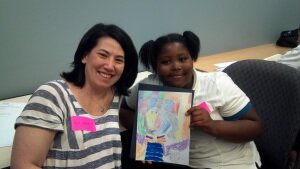
In 2011, Chicago Cares engaged nearly 14,000 corporate employees in service to our city. At the 2012 National Conference on Volunteering and Service, we worked with Points of Light and Chase to create the Seeds for Change project models that Ms. Ellis calls into question. We’ve taken a few points directly from the article to share some of our thoughts with nonprofits and corporations.
For Our Corporate Partners:
Cause Marketing is NOT volunteering
“It’s good news that high-ranking people are talking about volunteering in all sorts of public forums. The bad news, however, is that each corporation and national organization wants to ‘wear’ volunteerism…for only a moment.”
The vast majority of examples provided in Ms. Ellis’ article are focused on cause marketing, not on actual corporate service.
We will be the first to agree that cause marketing and “Dollars for Doers” types of programs are not ideal for the corporation, the nonprofit or the volunteer. As Realized Worth has already discussed, corporations trying to incentivize service face dwindling employee engagement and minimal measurable impact. Our research has shown that people who volunteer through these types of marketing programs generally don’t return to serve again, which results in sporadic support for the nonprofit.
Philanthropy is not a single act, it is a way of life. Volunteers serve because they have a personal connection to the cause or community they are serving, they don’t come for a cup of coffee. Nonprofits that recruit and train volunteers must embrace this responsibility and provide corporations the expertise to create successful and meaningful service opportunities.
Unfortunately, for many nonprofits, the time and effort needed to build and maintain high-impact volunteer programming remains a struggle due to tight budgets and employees already spread too thin by more pressing needs. This is why organizations like Chicago Cares and other HandsOn affiliates are so important. If a company really wants to make a difference, we can ensure that their actions translate into impact, balancing the interests of the company with the needs of the nonprofit organization. We are already in the community, managing ongoing relationships with organizations, listening to their needs and responding with appropriate project planning, supplies, logistics and curriculum that can best meet those needs.
Real Corporate Service is alive and well…and making an impact!
“Maybe it’s because service is an easy platform for corporations and institutions to gain a halo effect merely by stating a commitment to community involvement – with no risk of being held to promises made or even having to report back any activity at all.”
Every year we work with hundreds of companies of all sorts and sizes. Whether it’s an international conglomerate or a local business, the reason they return year after year has little to do with getting good press. They come back because they appreciate the opportunity to do hands-on work at local schools and social service agencies, they discover their employees are happier and more engaged when they learn to work together through volunteering and they’re inspired by what they can achieve outside of their day-to-day business goals.
The unique benefit that corporate volunteers offer through service is the ability to provide substantial budget relief to local service agencies which allows those organizations to focus their efforts on achieving their mission goals. In the words of Ms. Ellis, “examples abound.”
- Over the course of a single month, Discover’s BT Division was able to mobilize enough volunteers to repaint every client’s bedroom at Little City, a project that would have taken years for the organization to accomplish on their own. Because of Discover’s financial investment, those volunteers also constructed a “Safety Town,” where the Little City community can practice safe behaviors in a controlled environment, creating a greater sense of independence for residents.
- When our partners at the American Indian Center were awarded a grant from the Chicago Blackhawks to build an auditorium for their students, the staff was overwhelmed at the prospect of removing decades of stored items from their third floor space. Hyatt was able to provide enough volunteers to completely clean out the space in a single day, allowing the staff at the American Indian Center to utilize their grant funds more quickly.
- What started as a painting project at a Southside school for Grosvenor employees a few years ago, has grown into a unique relationship between the company and the school. Grosvenor employees continue to help with facilities improvements but they have also started tutoring programs, job skills training, sports camps and museum field trips at a school where over 99% of the students live at or below the poverty level.
Companies are doing more than coming up with slogans, through Corporate Volunteer Programs they are making a real difference in the lives of thousands of Chicagoans.
To Our Nonprofit Community:
If you aren’t reporting, you’re doing it wrong.
“Shouldn’t high profile volunteer promotions be held accountable by someone?”
YES. At Chicago Cares we know that reporting is key to ensuring a quality experience for the volunteer and a lasting impact for the community. Before a project can even begin, it is imperative to have information on the actual needs of the community and an understanding of the obstacles that your project will face. Throughout the entire life cycle of the service initiative, organizations must be keeping track of basic metrics like volunteer show rates, projects completed and cost analysis. Surveys need to be collected that measure the personal experience of the volunteer and the impact perceived by the community. We must include long-range data that asks questions like, “Did the volunteer return, why or why not?” and “Is there any measurable improvement in the community, why or why not?”
Take, for instance, the Seeds for Change program sponsored by Chase which was a central campaign at NCVS this year. We love to share the impact that volunteers had at the hands-on projects which served 3 under-resourced schools in Chicago. At Schmid Elementary in the Pullman neighborhood, volunteers built a learning garden that is part of the principal’s push to encourage healthy living and introduce her students to fresh foods that aren’t always available in this food desert. We started this project by sitting down with the principal and outlining her vision for the school. The community need always comes first.
Thanks to Chase’s support, conference participants had the opportunity to spend the morning volunteering at CPS schools in located in food deserts. Back at the conference center, thousands more helped build garden kits that will be delivered to almost 100 schools so that they can finally use their gardens as learning tools.
We measure the impact of these projects in several ways, including: what was accomplished, how many students will benefit, what will volunteers take away from this experience? We use this data to help improve our programs, to communicate impact to our corporate partners, and to share with the community we are serving. We believe measuring impact is critical to an effective volunteer project, whether volunteers are from community groups or corporations.
We can’t speak to what sort of data was provided to most of the companies that Ms. Ellis mentions in her article. However, if a company is not being provided with accurate and informed reporting after their service initiatives are complete, they need to find a new partner.
Be better than the hype
“…if our goal in the volunteer community is to increase and sustain volunteering over time, promotional campaigns must go beyond hoopla to legitimacy.”
We believe that if the volunteer community wants to increase and sustain volunteering over time, they need to stop focusing on finding the next promotional campaign and start focusing on quality volunteer experiences.
Real volunteers, the people who will become invested in the community and continue to serve, aren’t there to receive a prize, they’re there to make a difference. Whether a volunteer is walking into a project for the first time or the 100th time, it is our responsibility to make sure that when they leave, they know that their time was well-spent. Of course, there are times when we fail but it is exactly those failed experiences that allow us to collaborate with volunteers and partners in finding innovative ways to improve upon the work that we’re doing.
By relying on national ad campaigns to bring volunteers through our doors, we’re selling ourselves and our community short. In a recent survey, nearly all of our volunteer respondents mentioned how much personal fulfillment they receive by donating their time. Being an active part of building stronger communities is a truly transformational experience and that is the story that volunteer service organizations need to do a better job of telling.
If you really don’t believe that the act of giving your time in service to help others is far more powerful than a trip to a theme park or a coupon for free gas, than you are in the wrong business.
So What Do We Do Now?
“There is nothing wrong – and actually quite a bit of good – in many voices repeating the invitation to get involved.”
If you’re a company, don’t settle for a mediocre volunteer program. Chicago Cares, or other volunteer service organizations like us can help you meet your goals in a way that will have a deep impact on you and your community. If you aren’t receiving adequate reporting, start asking for it. If you aren’t being given a quality experience, find a better option. You have the power and the capacity to create a lasting impact in your community, so make sure you’re partnering with people who can help you make it happen.
If you’re a nonprofit organization, take charge. It doesn’t take a lot of money to tell a volunteer’s story or to research the ways that your organization is reaching your community. Improving your volunteer programs can often start with something as simple as running a quick survey to get ideas from the people who are supporting your work through service on a regular basis. Learn from their comments and don’t be afraid to try new things. Every school and agency has a story to tell. If it seems too overwhelming, then find a HandsOn Affiliate to help you recruit and organize volunteers for your programs. Don’t wait for a corporation to inspire your volunteers to serve, go out and do it yourself!
For all of us, the most important thing that we can do is serve. Serve without cynicism. Serve with awe at what we can accomplish when we all work together.

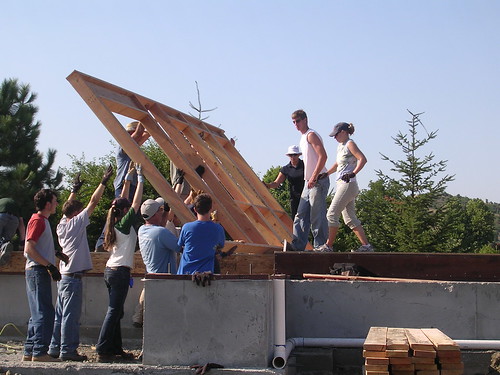

 What makes people volunteer? This question often runs across the minds of nonprofit organizations when trying to recruit volunteers for service projects. It is important to understand these motivating factors to recruit more dedicated volunteers to your cause. When individuals have a strong tie to your organization, they are more likely to return for service again. They feel that their needs and feelings are being respected when they are included in project planning.
What makes people volunteer? This question often runs across the minds of nonprofit organizations when trying to recruit volunteers for service projects. It is important to understand these motivating factors to recruit more dedicated volunteers to your cause. When individuals have a strong tie to your organization, they are more likely to return for service again. They feel that their needs and feelings are being respected when they are included in project planning.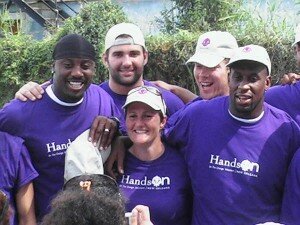 otherwise. This type of reasoning includes “I can make new contacts that might help my business or career “or “Volunteer work will look good on my resume.” It is important for your organization to include the personal benefits to volunteering, as well as the overall community benefits from volunteer work.
otherwise. This type of reasoning includes “I can make new contacts that might help my business or career “or “Volunteer work will look good on my resume.” It is important for your organization to include the personal benefits to volunteering, as well as the overall community benefits from volunteer work.
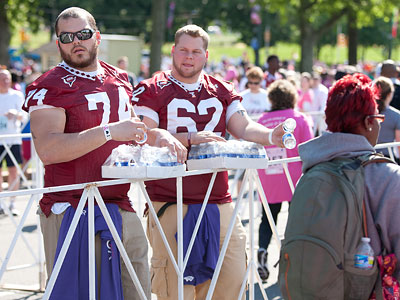
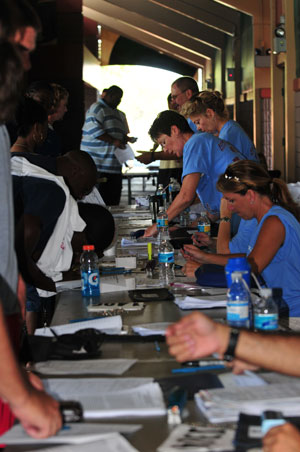 Host your own football draft: While you and your community is in the midst of all this competition make a pact to serve others year round. With all the fun you are going to have it will not be hard to recruit people! You can make this happen through making a donation calendar, assigning a bin to be stored in a local area for donations, writing up a schedule to define who will take donations to the food bank each month, etc. Just remember communication is key to any successful team!
Host your own football draft: While you and your community is in the midst of all this competition make a pact to serve others year round. With all the fun you are going to have it will not be hard to recruit people! You can make this happen through making a donation calendar, assigning a bin to be stored in a local area for donations, writing up a schedule to define who will take donations to the food bank each month, etc. Just remember communication is key to any successful team!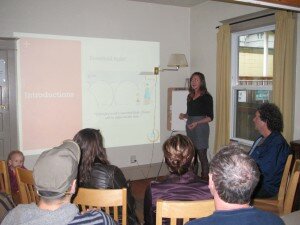 As a volunteer manager, it is important to keep your volunteers up-to-date and in the loop with important information regarding your organization. Communication is also a key step to project management and it should be an essential step in every service project planning steps. What is the best communication strategy for your organization?
As a volunteer manager, it is important to keep your volunteers up-to-date and in the loop with important information regarding your organization. Communication is also a key step to project management and it should be an essential step in every service project planning steps. What is the best communication strategy for your organization? market itself at a low cost, which will help your organization attract a new audience.
market itself at a low cost, which will help your organization attract a new audience.
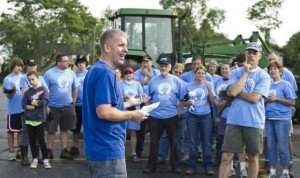 is essential to the success of your project. Make sure that you make this step a priority within your organization. As you can see there are many different communication tools that your organization can use that do not cost a great deal of money. It is important for your organization to choose a communication tool that will fit your organization’s style.
is essential to the success of your project. Make sure that you make this step a priority within your organization. As you can see there are many different communication tools that your organization can use that do not cost a great deal of money. It is important for your organization to choose a communication tool that will fit your organization’s style.


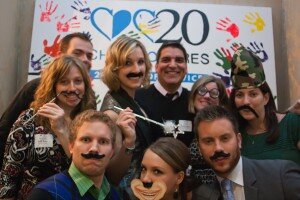
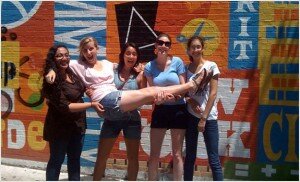
 Recruiting volunteers is the first step to a successful volunteer program within your organization. Training your volunteers to be an effective part of your organization is equally important.
Recruiting volunteers is the first step to a successful volunteer program within your organization. Training your volunteers to be an effective part of your organization is equally important. and weaknesses.
and weaknesses.
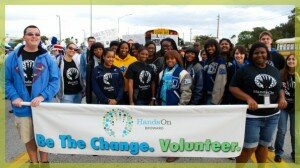

 July is a month full of fun in the sun, vacation destinations, and backyard barbecues. Any wonder why it is Anti-Boredom Month, we think not!
July is a month full of fun in the sun, vacation destinations, and backyard barbecues. Any wonder why it is Anti-Boredom Month, we think not!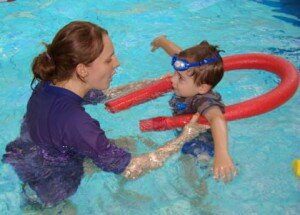
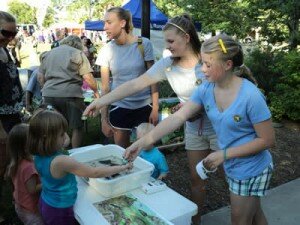 You can beat your summer boredom through so many different volunteer activities. Volunteering will not only benefit you, but also your community. By giving back, you will not only feel less boredom, but you will also be in a much better mood!
You can beat your summer boredom through so many different volunteer activities. Volunteering will not only benefit you, but also your community. By giving back, you will not only feel less boredom, but you will also be in a much better mood! According to a 2011
According to a 2011  program is to identify which business objectives can be achieved through the actual program efforts. These priorities can be identified in a mission statement. Let employees and outsiders know that volunteering is an important aspect of the overall business of your company or organization. You can better tailor your volunteer interests by studying your current mission statement and matching it to a philanthropic mission.
program is to identify which business objectives can be achieved through the actual program efforts. These priorities can be identified in a mission statement. Let employees and outsiders know that volunteering is an important aspect of the overall business of your company or organization. You can better tailor your volunteer interests by studying your current mission statement and matching it to a philanthropic mission. Developing an employee volunteer program will not only benefit your community, but it will also generate a more positive workplace for all involved. Get your employee volunteer program started today to see the many benefits that will come!
Developing an employee volunteer program will not only benefit your community, but it will also generate a more positive workplace for all involved. Get your employee volunteer program started today to see the many benefits that will come!
